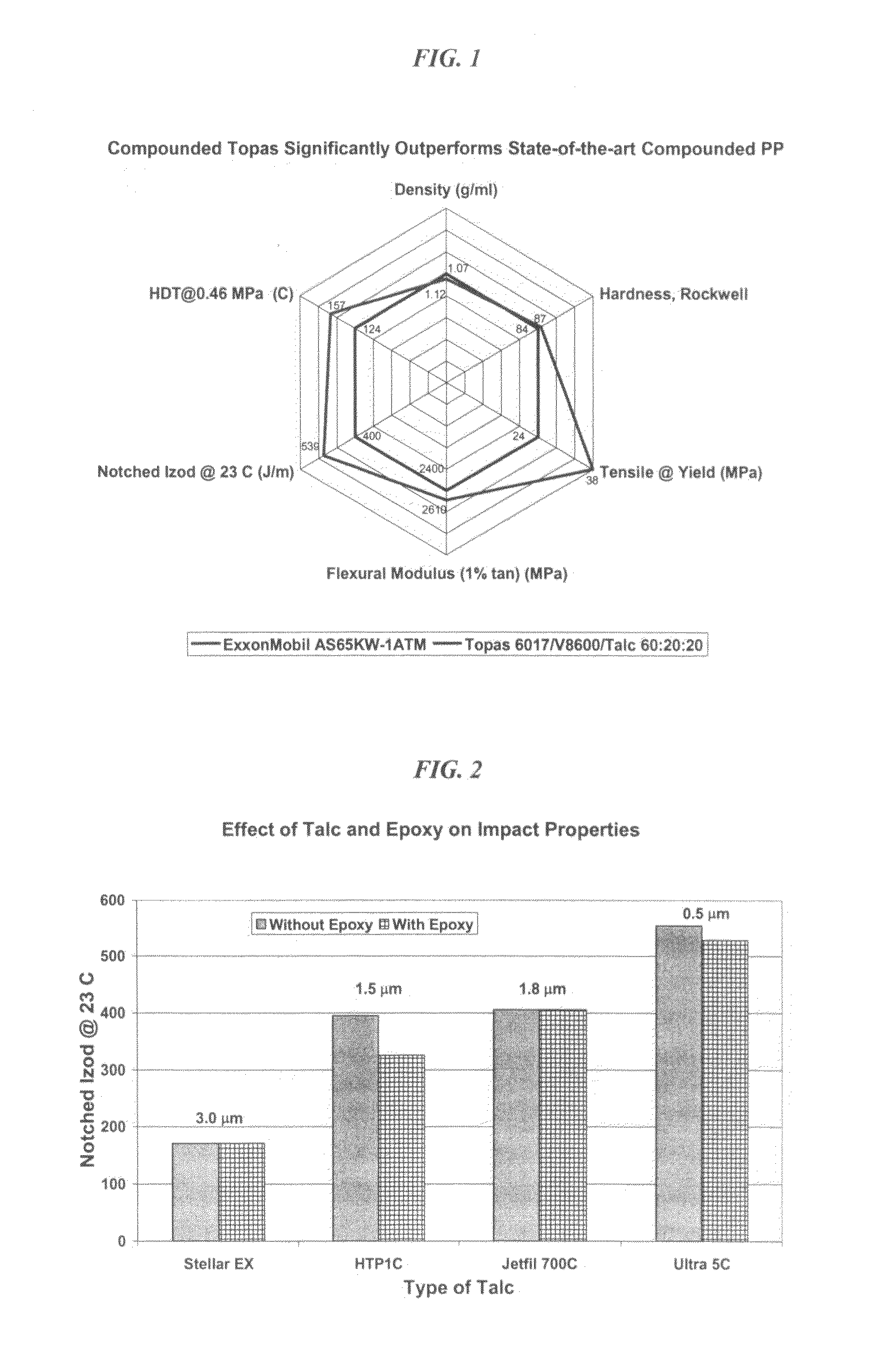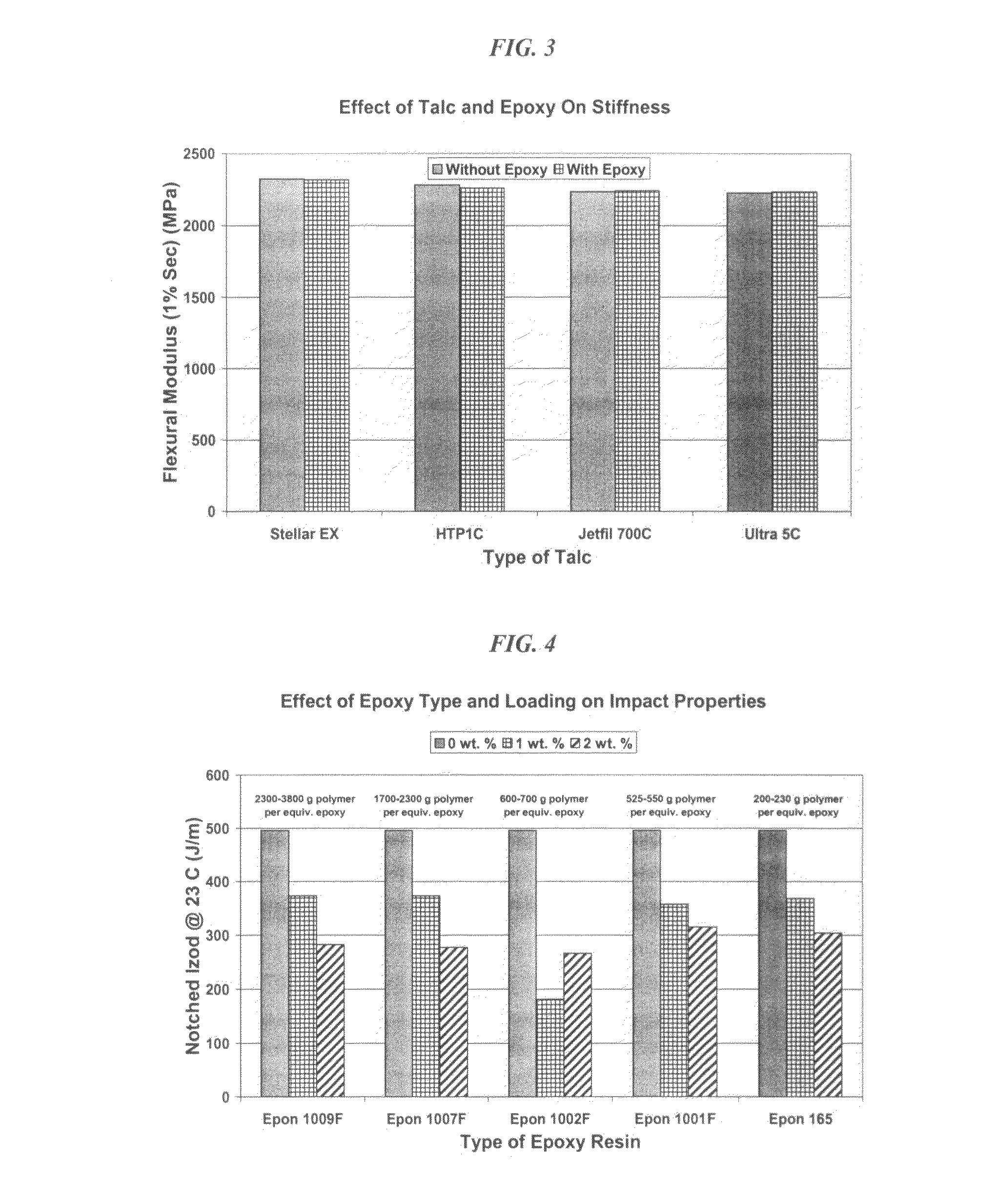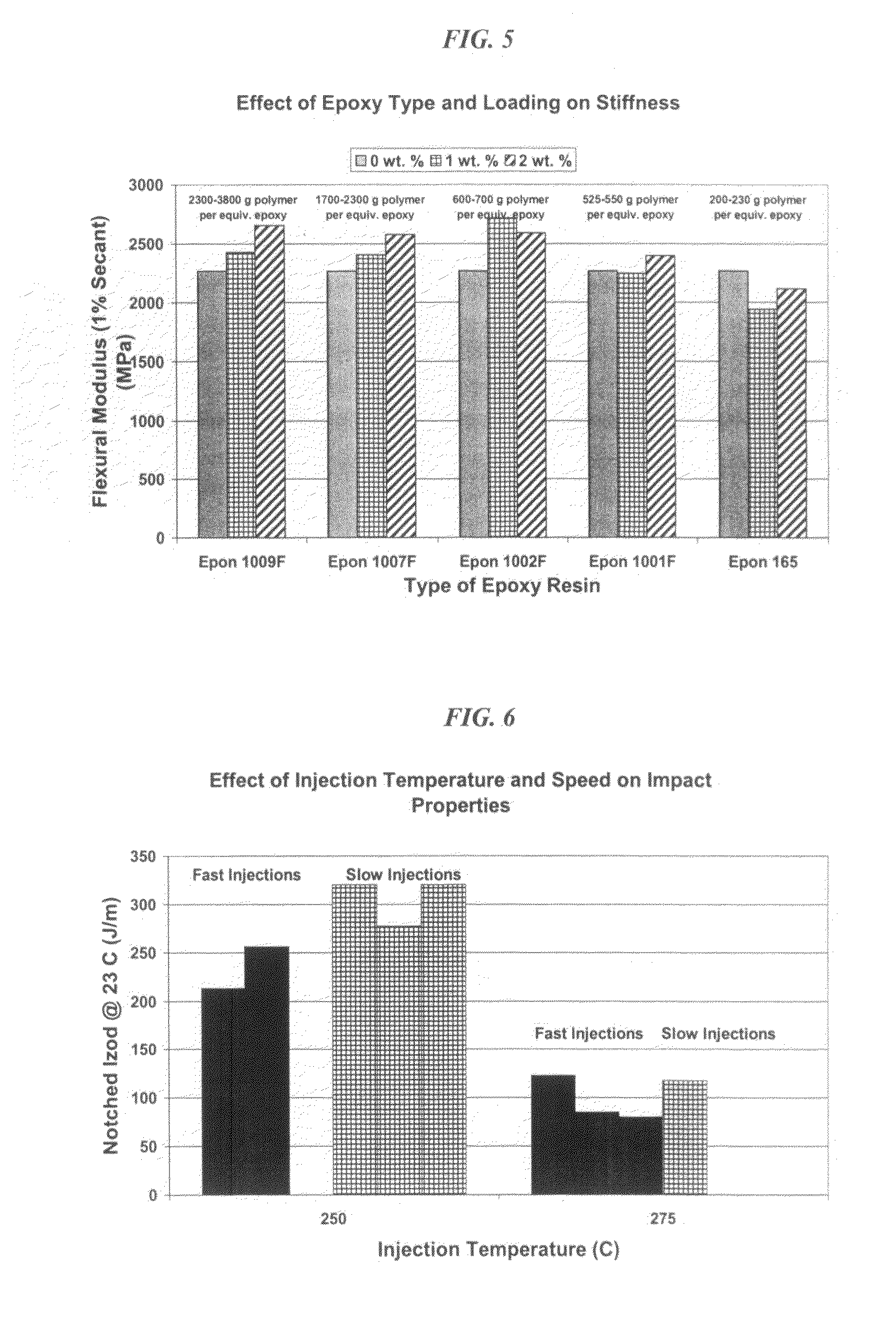Polymer compositions comprising cyclic olefin polymers, polyolefin modifiers, and fillers
a technology of cyclic olefin and polymer, applied in the field of polymer compositions comprising cyclic olefin polymers, polyolefin modifiers, fillers, can solve the problems of poor impact properties, high glass transition temperature and stiffness, and inability to meet the requirements of many applications, and achieve the effects of improving the impact resistance and reducing the brittleness of the glass transition
- Summary
- Abstract
- Description
- Claims
- Application Information
AI Technical Summary
Benefits of technology
Problems solved by technology
Method used
Image
Examples
examples
[0183]The invention will now be more particularly described with reference to the following non-limiting Examples.
[0184]The following materials were used in Examples:
[0185]
MaterialSourcePropertiesVistalon 8600ExxonMobil ChemicalBimodal EPDM rubber containing 57 wt % ethylene,Company8.9 wt. % ethylidene norbornene, 34.1 wt. %propylene. Tg is −45.15° C. and rubber has no otherfeature (no softening point) in its DSC trace run at10° C. / min.Vistalon 9500ExxonMobil ChemicalBimodal EPDM rubber containing 60 wt. % ethylene,Company11 wt. % ethylidene norbornene, 29 wt. % propylene.Tg is −41.64° C. and rubber has no other feature (nosoftening point) in its DSC trace run at 10° C. / min.Vistalon 7001ExxonMobil ChemicalMetallocene based bimodal EPDM containing 73Companywt. % ethylene, 5 wt. % ethylidene norbornene, 22wt. % propylene. Tg is −39.13° C. and rubber has amelting peak at 45° C. in its DSC trace.Exxelor PO 1020ExxonMobil ChemicalHomopolymer of PP grafted with 0.5-1.0 wt. %Companymaleic ...
examples 10 to 17
[0195]To further investigate the effects of the type of talc and the presence or absence of the epoxy resin as a coupling agent, a study of four types of talc, with and without epoxy resin, is presented in Tables 3 and 4. A comparison of room temperature notched Izod impact resistances is shown in FIG. 2. As the size of the talc decreases (shown at the top of the bars), the impact resistance steadily increases. The 0.5 mm Imi Fabi Ultra 5C talc was the best talc. The blends with this small talc had impact resistances about 3 times higher than blends with the large talc.
[0196]
TABLE 3Injection Molded - Effect of Talc TypeEx. 10Ex. 11Ex. 12Ex. 13Topas 601759.958.959.958.9Vistalon 860020202020Jetfil 700C2020Imi Fabi HTP1C2020EPON 100211Irgafos 1680.10.10.10.1Tens @ Yield (MPa)40.6941.0641.1539.29Strain @ Yield (%)3.33.23.53.3Strain @ Break (%)13.211.618.414Young's Modulus (MPa)275327722854Flex Mod 1% sec (MPa) @22342241228222610.05 in / minFlex Mod 1% Tan (MPa) @23722496235125170.05 in / mi...
examples 18 to 28
[0200]In FIG. 4 and Tables 5 and 6, the effects of epoxy type and loading are illustrated for the room temperature notched Izod resistance of 60:20:20 Topas 6017 / Vistalon 8600 / Jetfil 700C talc blends. As more epoxy resin is used in these blends, the room temperature notched Izod values decrease. The epoxy resins increase in polarity from left to right in FIG. 4. The more polar epoxy resins seem to give slightly higher impact resistances when loaded with 2 wt. % epoxy, although the effect is small. Values of the flexural modulus (1% secant) are plotted for these same blends in FIG. 5. As the amount of epoxy resin used in the blends increases, the flexural modulus or stiffness of the blends increase. The very polar epoxy resins (Epon 1001F and Epon 165) have slightly lower overall flexural moduli. For applications requiring the best room temperature notched Izod impact resistances, using no epoxy resins is clearly preferred. For applications requiring the highest flexural modulus or s...
PUM
| Property | Measurement | Unit |
|---|---|---|
| glass transition temperature | aaaaa | aaaaa |
| solubility parameter | aaaaa | aaaaa |
| glass transition temperature | aaaaa | aaaaa |
Abstract
Description
Claims
Application Information
 Login to View More
Login to View More - R&D Engineer
- R&D Manager
- IP Professional
- Industry Leading Data Capabilities
- Powerful AI technology
- Patent DNA Extraction
Browse by: Latest US Patents, China's latest patents, Technical Efficacy Thesaurus, Application Domain, Technology Topic, Popular Technical Reports.
© 2024 PatSnap. All rights reserved.Legal|Privacy policy|Modern Slavery Act Transparency Statement|Sitemap|About US| Contact US: help@patsnap.com










